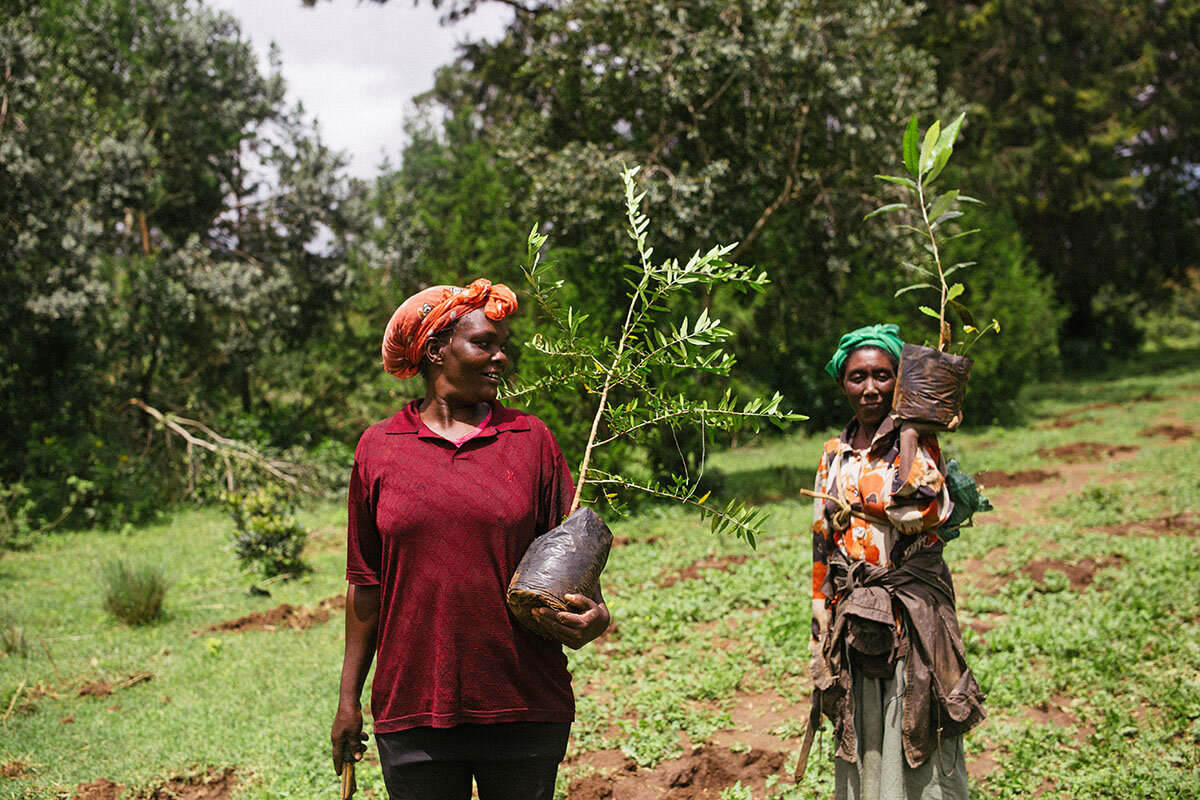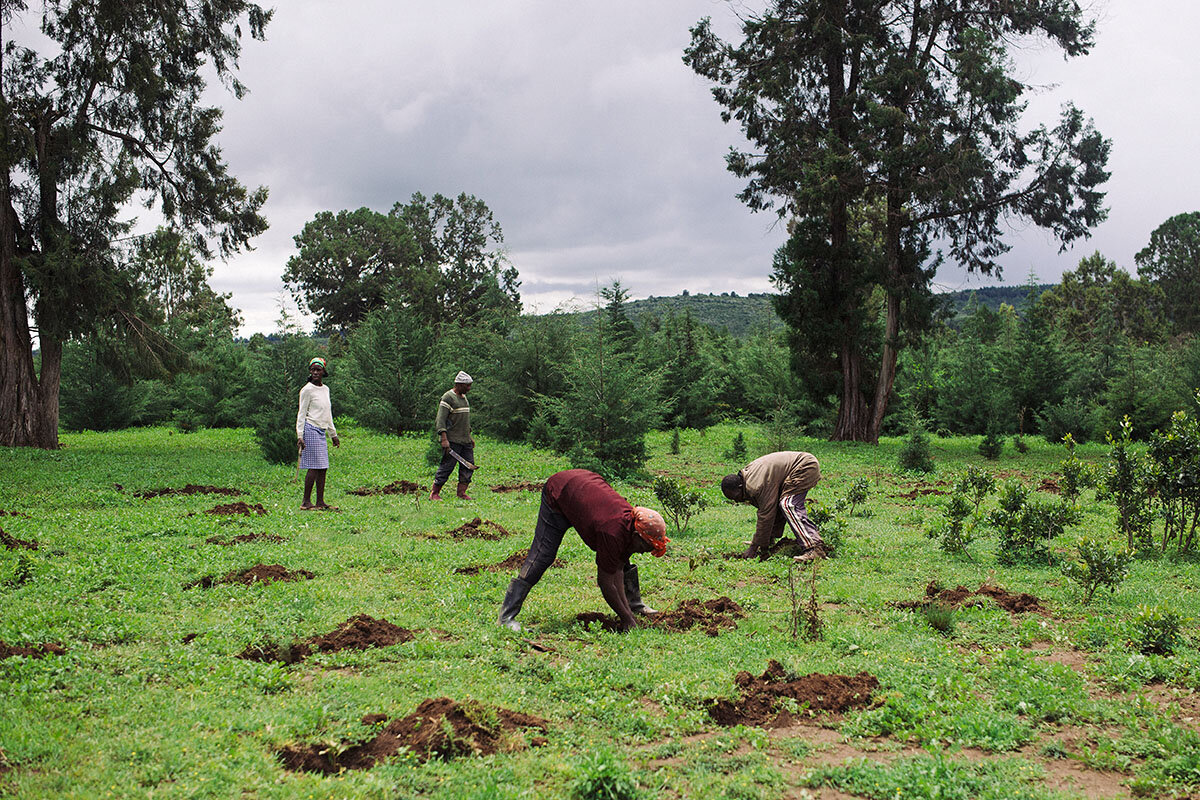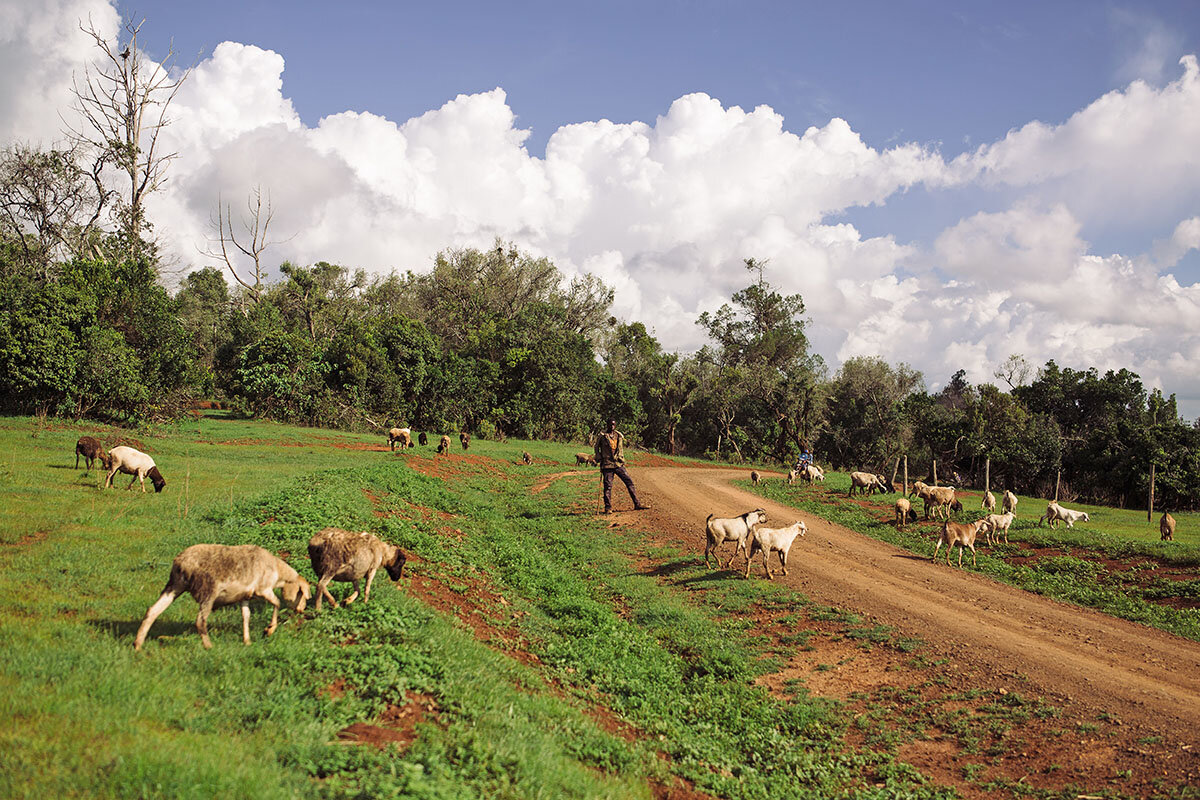The thorny fight to save Mount Kenya’s ancient forests
Loading...
| NYERI, KENYA
When Shikuku Willy Ooko was in his early 20s, he was deeply taken with the Afro-Alpine forests of central Kenya. So much so that he decided to buy 15 acres of woodland adjacent to Mount Kenya National Park & Reserve, in the small market town of Naro Moru, a base for hikers ascending Mount Kenya.
More than 30 years later, in the valley beneath the majestic snow-capped volcano, Mr. Ooko’s home is one of the few plots still flourishing with indigenous trees and plants. In contrast, much of the national park has been heavily logged.
And it is further being eroded as pastoralists, pushed off their traditional rangelands by drought, turn to grazing their flocks on the mountain’s flanks. This encroachment is a lose-lose situation: The grazing is not nutritious for livestock, and the delicate Afro-Alpine soil and plants can take decades to regenerate.
Why We Wrote This
Conservancy can often be a delicate balancing act. In Mount Kenya, locals are caught between trying to protect pristine forest and helping desperate herders grazing on the mountainside.
“Mount Kenya is a national park [only] above the tree line,” Mr. Ooko says. “The demarcation considered only the mountain ecosystem, without putting much thought into the forested portion.”
The uniqueness of the Mount Kenya region – its remoteness and fragility – is exactly what makes it difficult to safeguard. Though the Kenya Forest Service, a state corporation, has made restocking and sustainably managing all public forest plantations its , the burden of conservation has fallen on the shoulders of local individuals such as Mr. Ooko.
Playing politics with trees
A seasoned outdoors guide, Mr. Ooko knows that his livelihood, along with that of thousands of guides and porters in the region, depends on the health and robustness of his backyard, which is home to an ancient extinct volcano that is Africa’s second-highest peak.
Born in semiarid Baringo County in the Great Rift Valley, he settled in the heartland of the Mount Kenya region. He then trained with the National Outdoor Leadership, an American nonprofit outdoor educational school based in Naro Moru, the county’s main town.
In those days “there was such amazing primary growth along the Naro Moru River,” he recalls wistfully. But he feared the government would be unable to preserve such a place. Mr. Ooko’s premonition proved correct.
Recently, Kenyan President William Ruto’s statements on forest management have spurred concerns among environmental activists and politicians alike. On the one hand, he has announced plans to plant . But on the other, he has also permitted logging in purportedly to provide jobs for impoverished youths. It is the latest misstep in a long and marred history of using the forests for political purposes.
In the 1990s, some communities native to the Mount Kenya region were forced out of their ancestral homes in the forest during a land grab by the government. Ahead of highly contested elections, decadeslong ruler Daniel arap Moi removed protection from much of the park and doled out parcels of pristine, old-growth forest to politically connected allies in an effort to win votes.
“It was supposed to be a temporary relocation,” says James Kagambi, a veteran mountaineer and conservationist. “But people were never able to live on their generational land in the same way again.”
There were also devastating ecological repercussions. The rich and diverse vegetation growing in such high-altitude forest zones is extremely delicate; research has shown that it’s one of the ecosystems on Earth. The new owners denuded the land, turning it into farmland, seen as far more profitable.
Stripping the forest of its official protection triggered intense logging. Timber merchants with official licenses could log at will, while local people, who lacked political connections, got hold of power saws that they used to cut trees down under the cover of night. “It was a 24-hour rape of rich, rich forest cover,” says Mr. Ooko.
Still, some locals fought hard against the devastation. In 2004, Wangari Maathai, who was born locally, became the first African woman to win the Nobel Peace Prize for the manner in which her sustainable development and conservation approach embraced democratic values. Against difficult odds, others are continuing the fight, too.
Earlier this year, Mr. Kagambi, the conservationist, attended a tree-planting exercise in Naro Moru.
The problems caused by uncontrolled grazing might be manageable if only a few dozen families were involved, he says. “But this is amongst [well] connected individuals, involving people in the government.”
Droughts cause forest wildfires
At the same time, frequent and longer droughts are pushing poorer herders to range farther onto the mountain to save their cattle.
Susie Weeks, the executive director of the conservation organization Mount Kenya Trust, says that in recent years, herders have even built animal pens within legally protected areas. “It’s a bit of a jarring sight,” Ms. Weeks says, “when [foreign] visitors have to pay a hefty fee to enter the park but then come across huge herds of grazing animals in the fragile environment.”
The laws protecting that environment are in place, Ms. Weeks adds, but they are insufficiently enforced. “Rangers at each gate are limited,” she points out.
Phinneas Rewa, a Kenya Forest Service officer with three decades of experience, points to another problem. have been increasing in both intensity and frequency on Mount Kenya as a result of the droughts. Twenty years ago, he says, he never saw any animals in his sector of the mountain. But since then, “frequent fires have burned down trees, creating grasslands, which are very conducive to grazing.”
When he’s at home in Naro Moru in between expeditions, Mr. Kagambi advocates for tree planting, particularly among kids. “It’s something I grew up doing,” he explains. “When I was young, my dad would give all of us kids 10 seedlings to plant and take care of. Somehow, he knew the connections between trees and rain.”
It’s a practice Mr. Kagambi has kept alive despite persisting challenges with climate and cattle; it is not uncommon for livestock to trample the young trees that he and his protégés have planted. “We just keep going,” he says. “It’s something I value, and I think we should plant more.”






